Abstract
This paper summarizes the results of laboratory and field trials carried out in a number of countries with the molluscicide Bayer 73. The minimum lethal concentrations for snails transmitting Schistosoma and Fasciola (and for the snail ova) were found in different laboratories to be between 0.2 p.p.m. and 0.5 p.p.m., a close measure of agreement. Data are also presented on the influence of exposure time, temperature, water composition and pH, light and mud on the efficacy of this molluscicide.
Laboratory tests have shown miracidia and cercariae to be highly sensitive to Bayer 73. Its toxicity for fish is very similar to that for snails; warm-blooded animals, however, appear to be highly resistant to this compound, as are plants.
Field trials have furnished information on application methods, optimum concentrations and a variety of factors bearing on the efficacy of Bayer 73 in practice. They show that a concentration of 1 p.p.m. of this compound suffices to destroy snails in both standing and flowing water. In different experiments, such water remained free of snails for periods varying from several weeks to several months.
Comparative trials with other molluscicides are also reviewed. These indicate that against snails and their eggs Bayer 73 is some 10 times superior to sodium pentachlorophenate.
Full text
PDF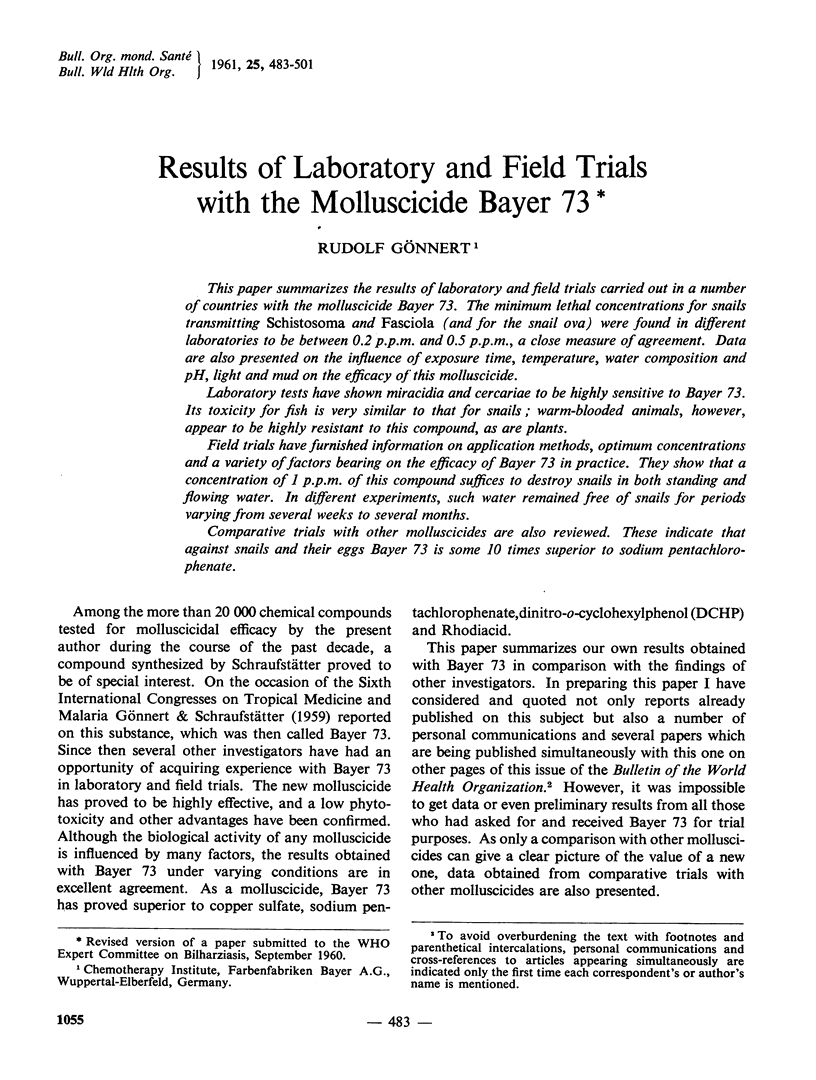
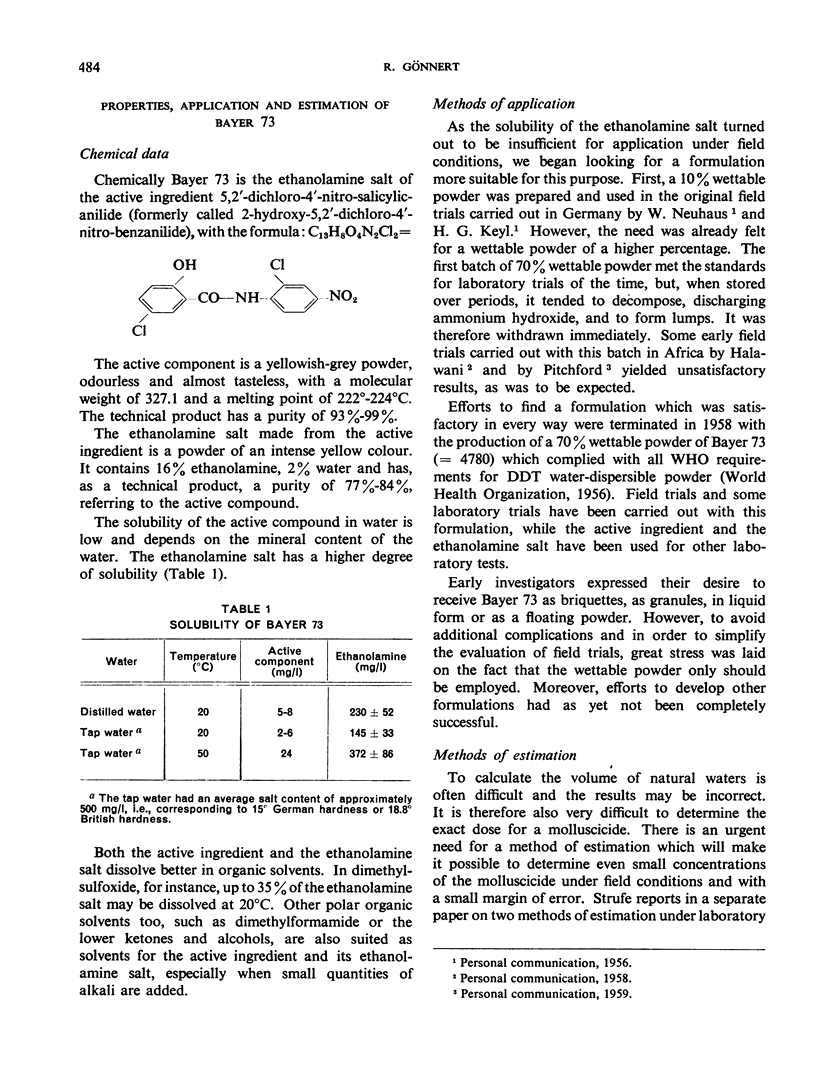
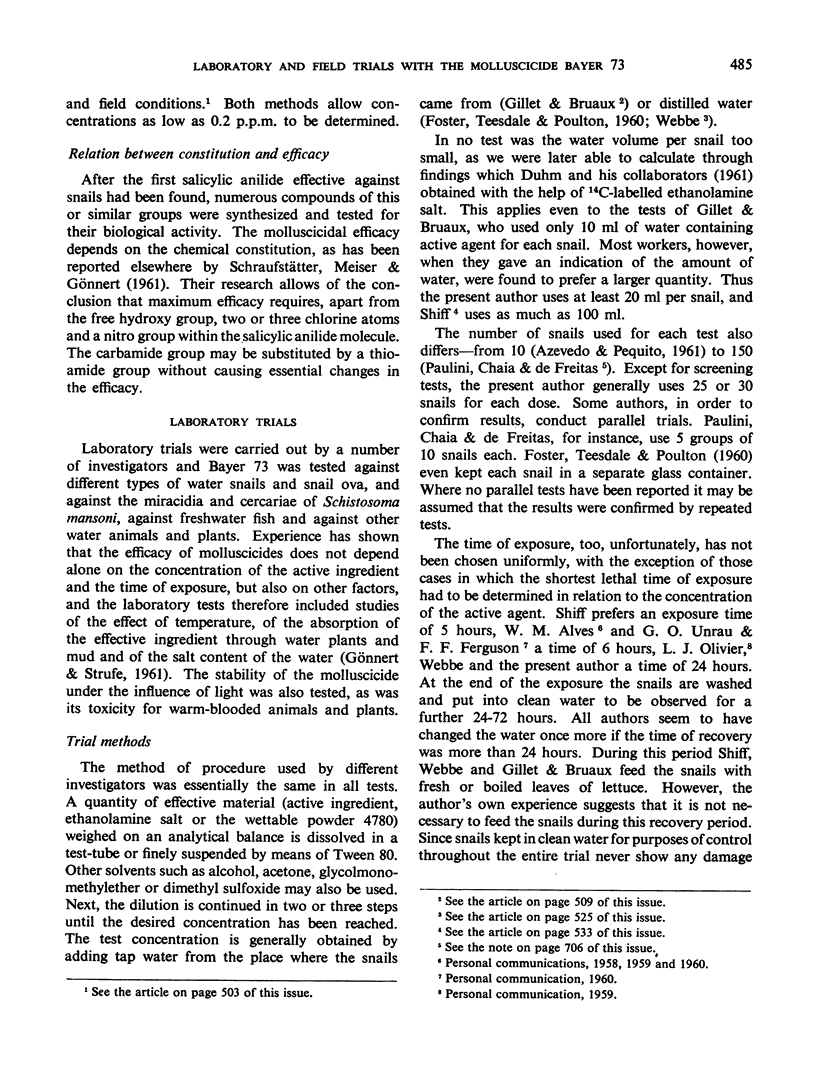
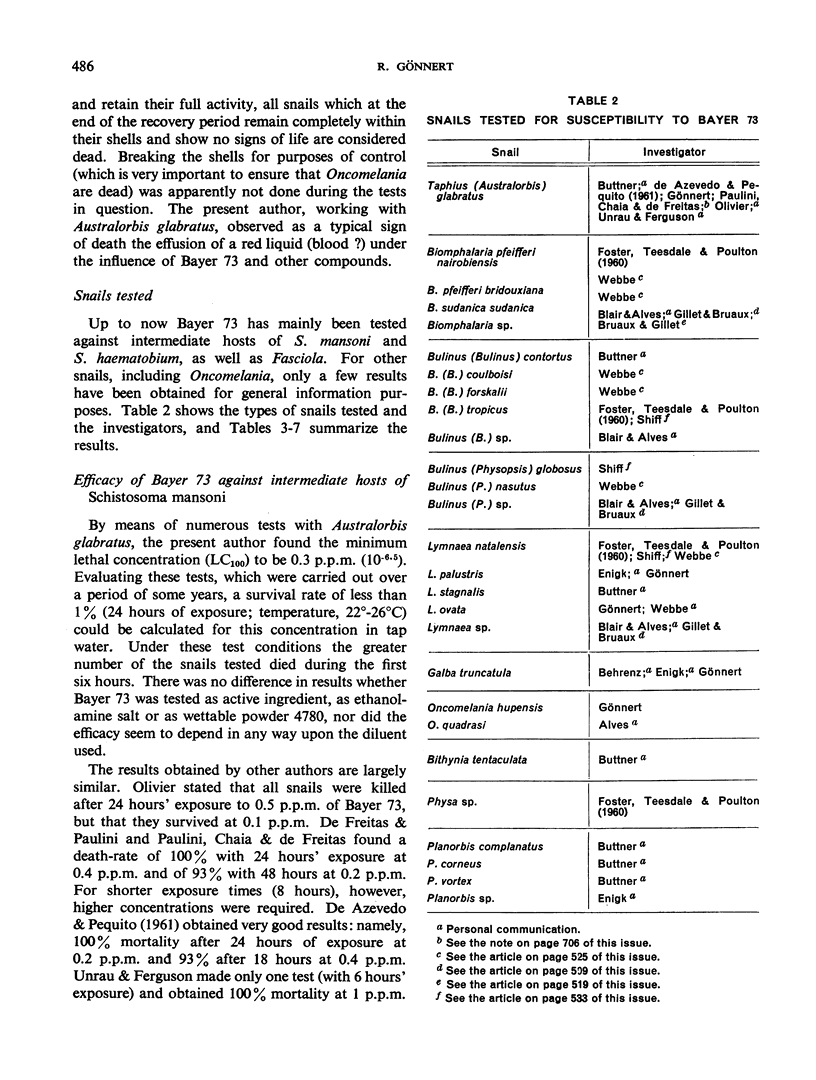
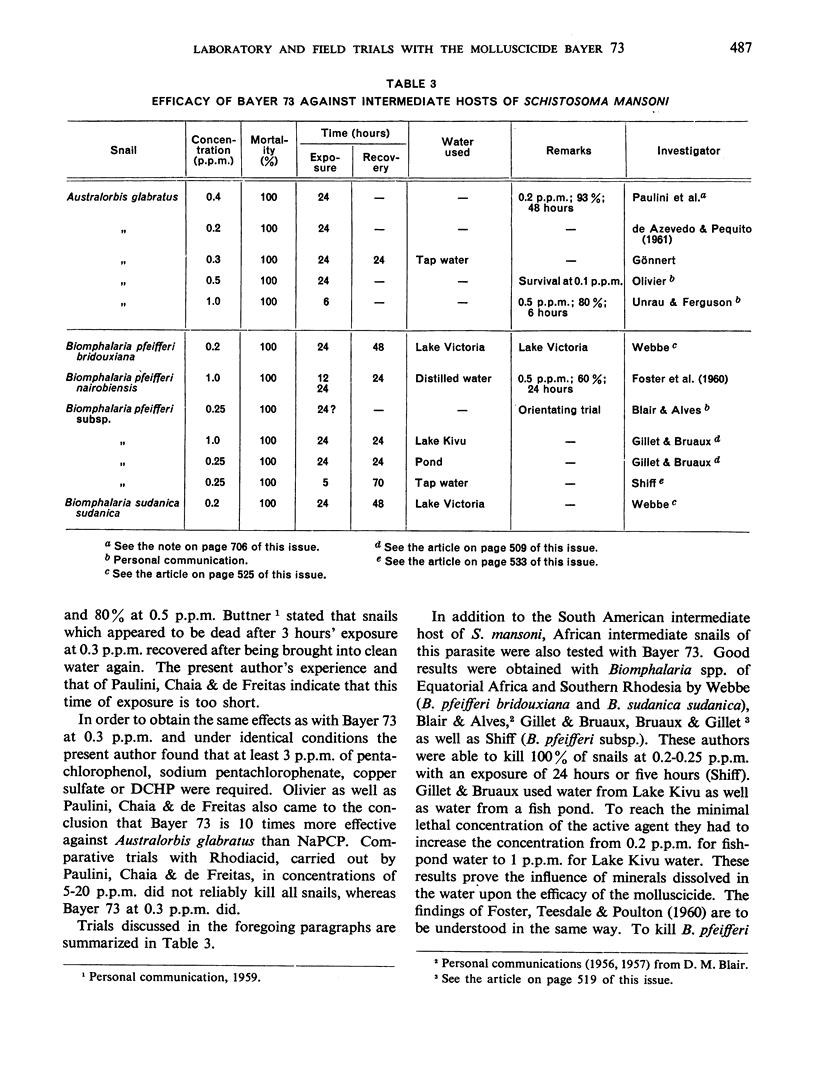
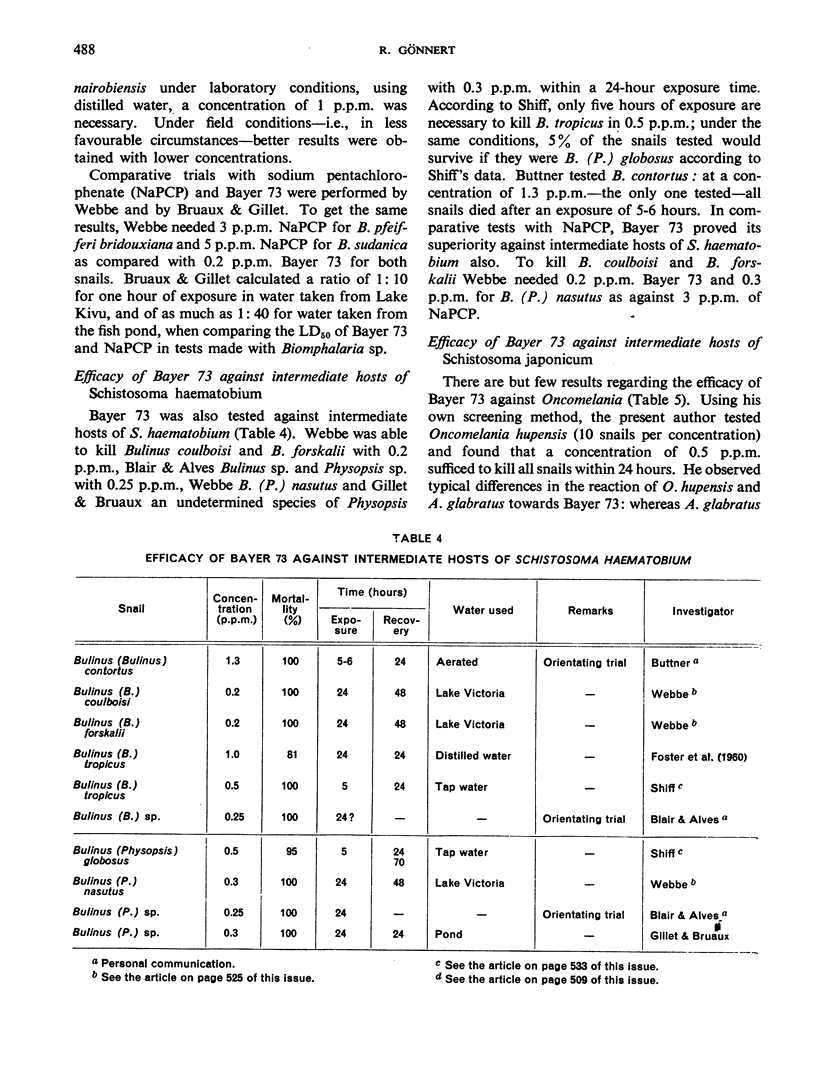
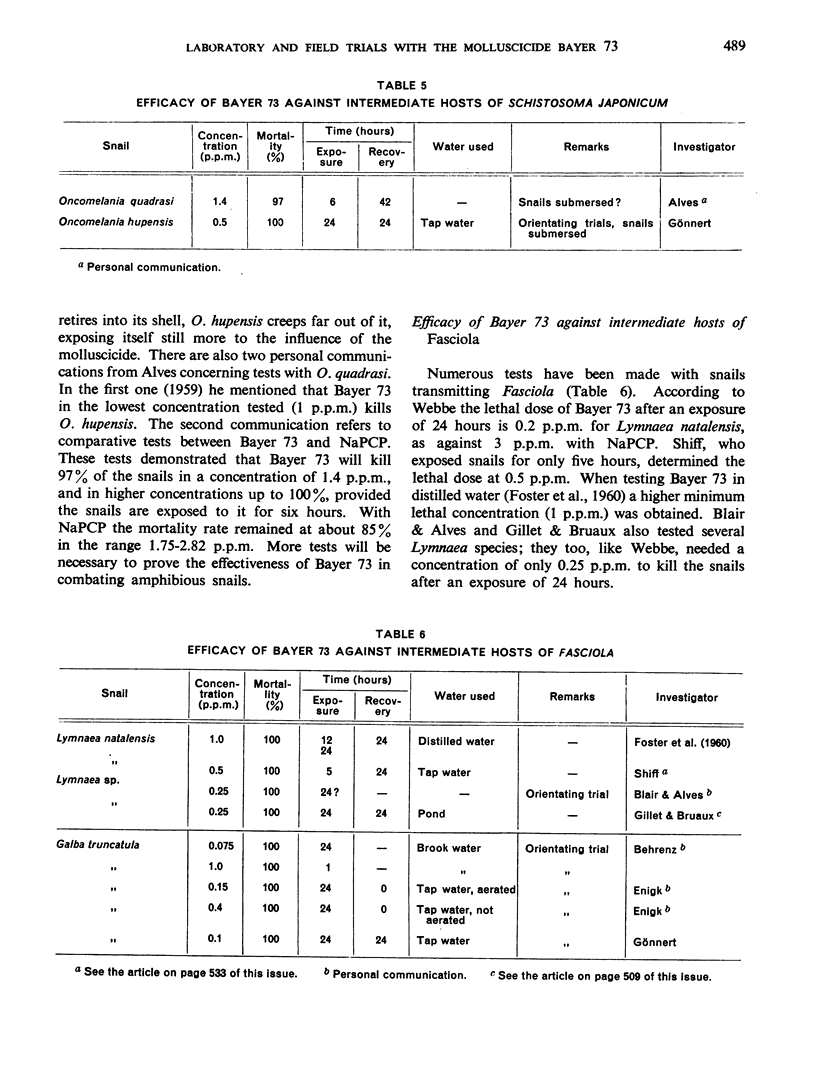
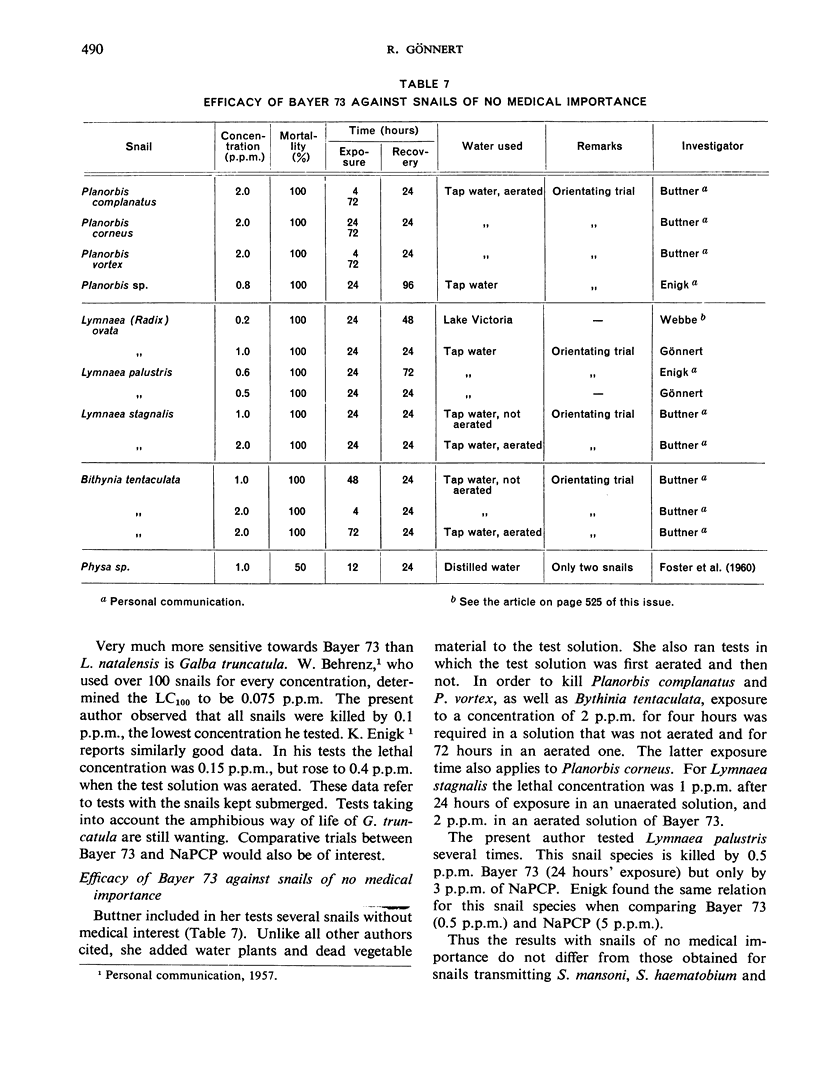
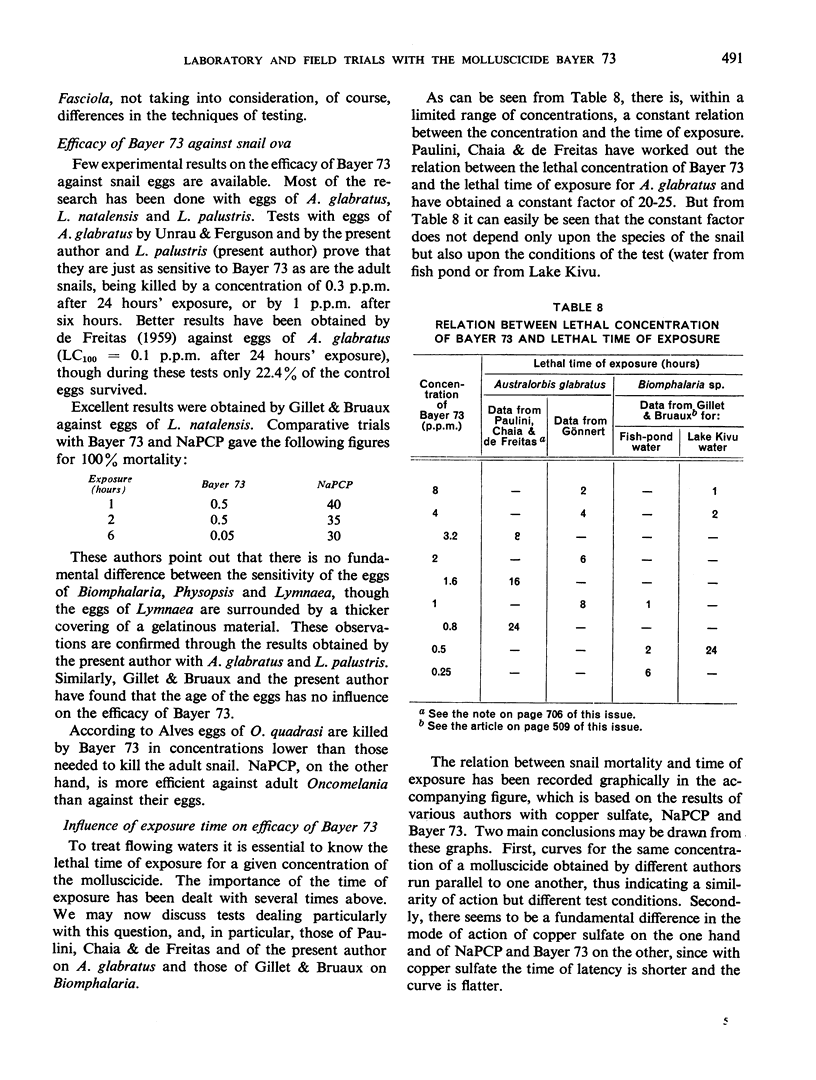
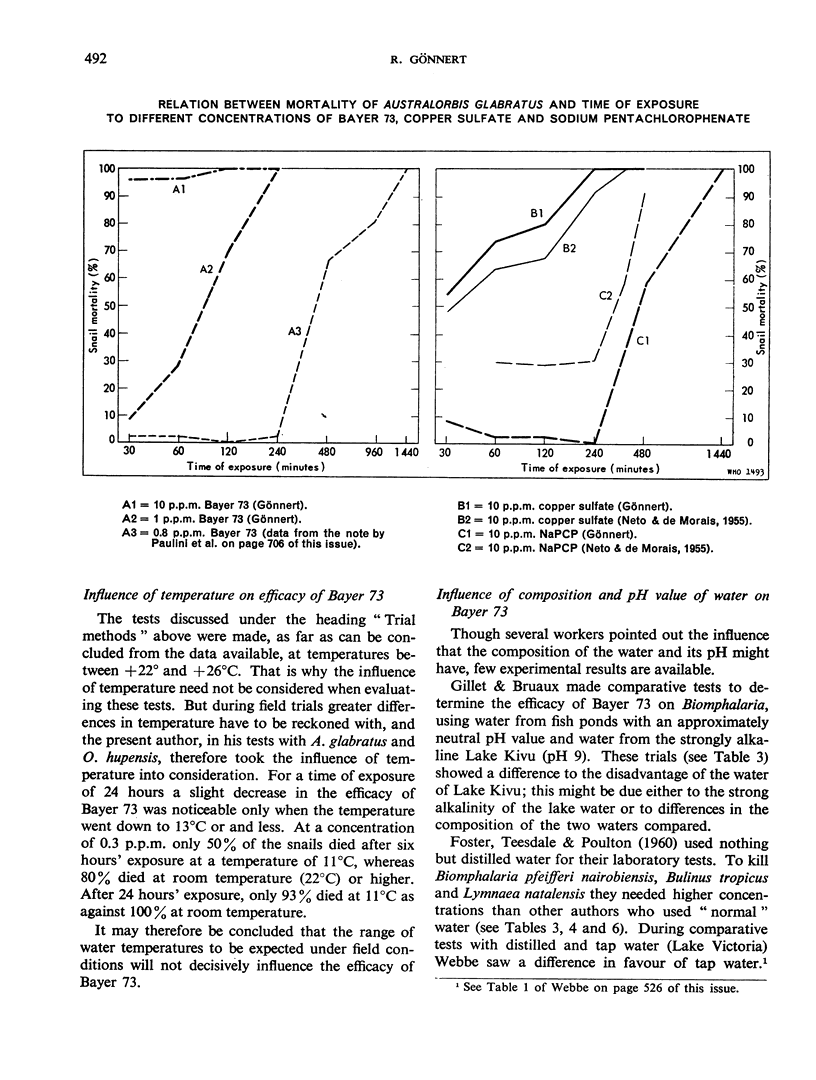
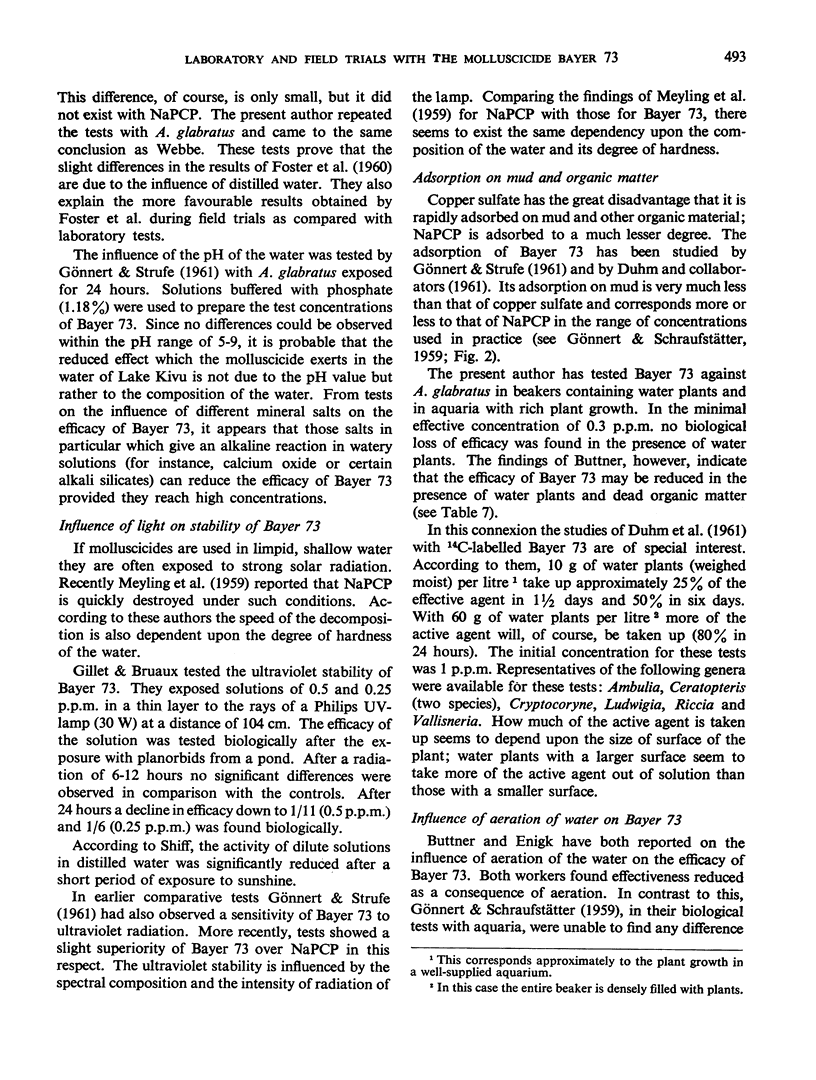
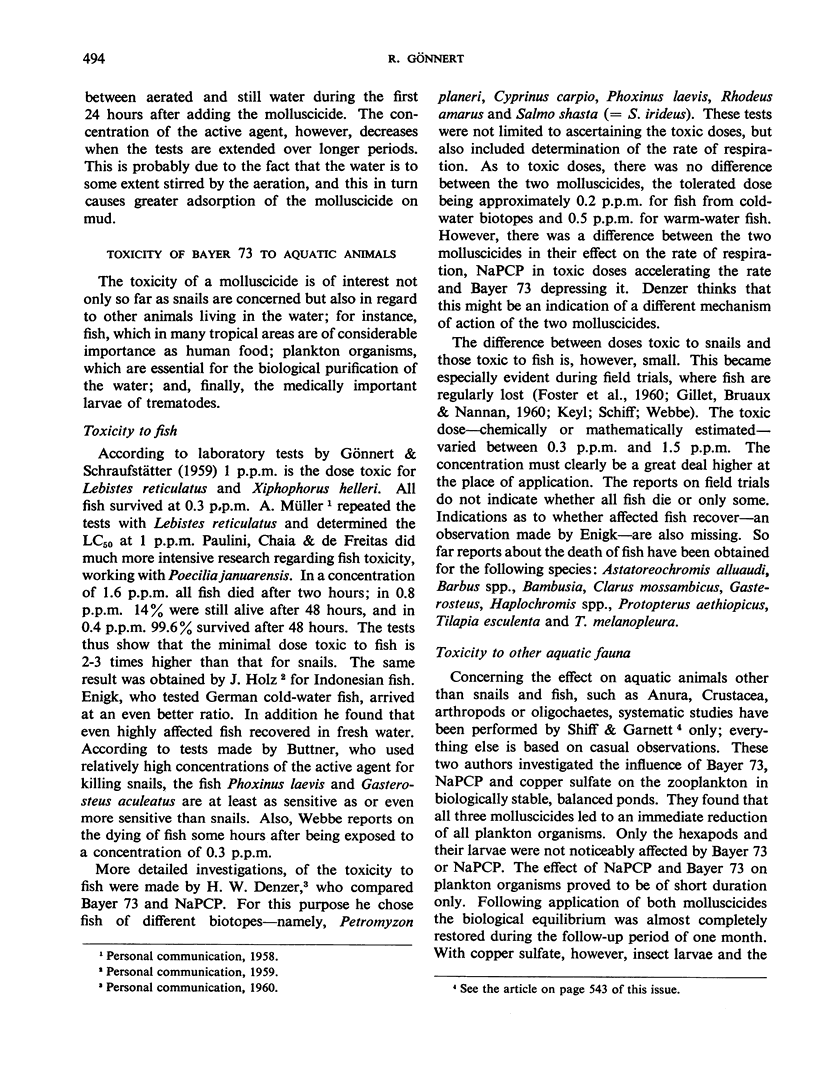
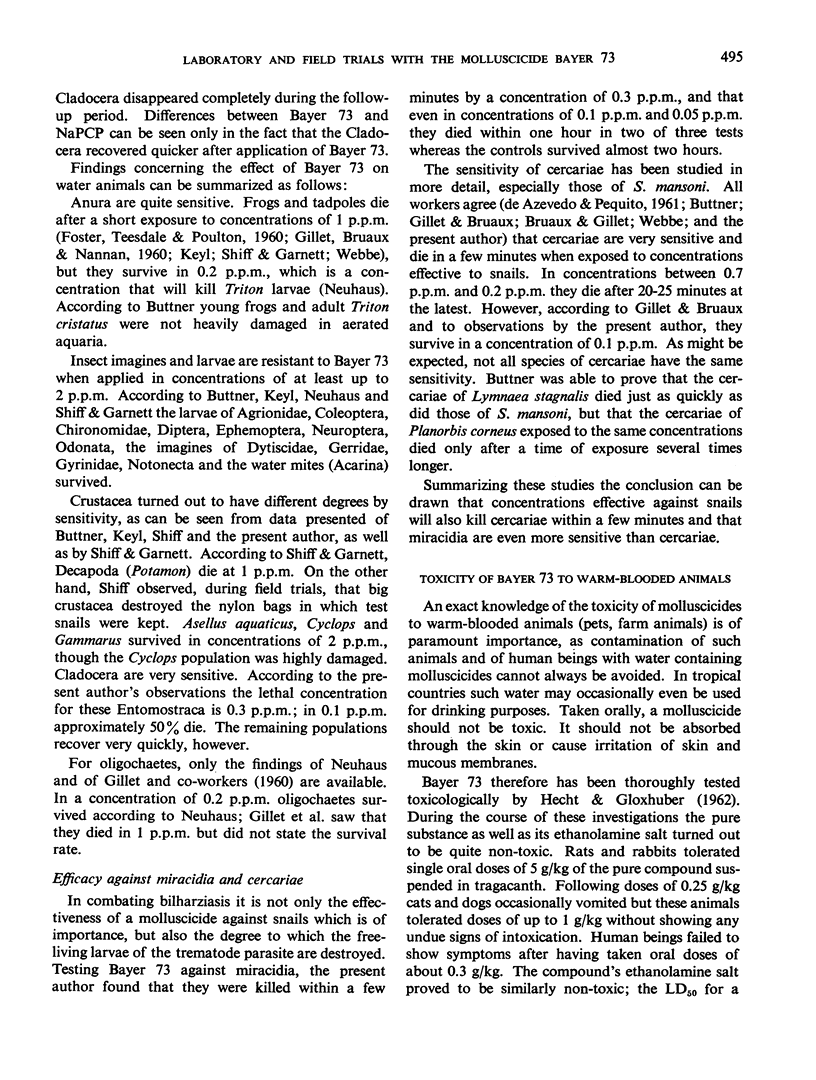
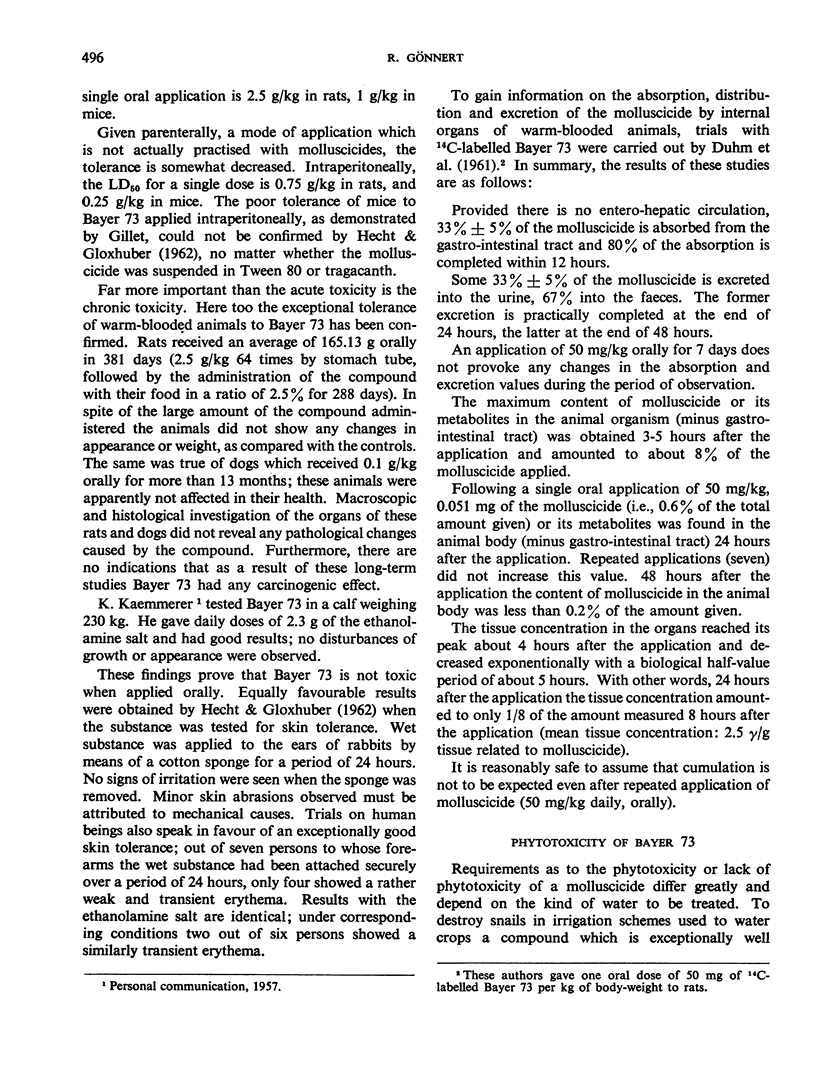
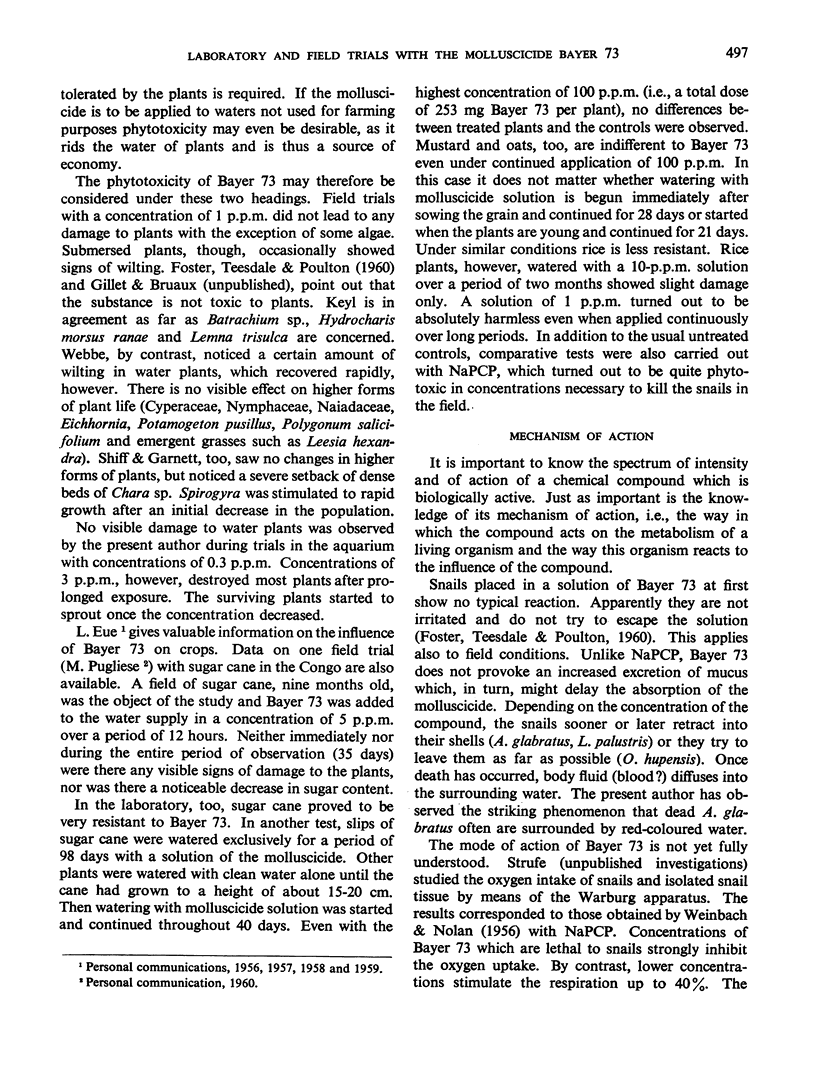
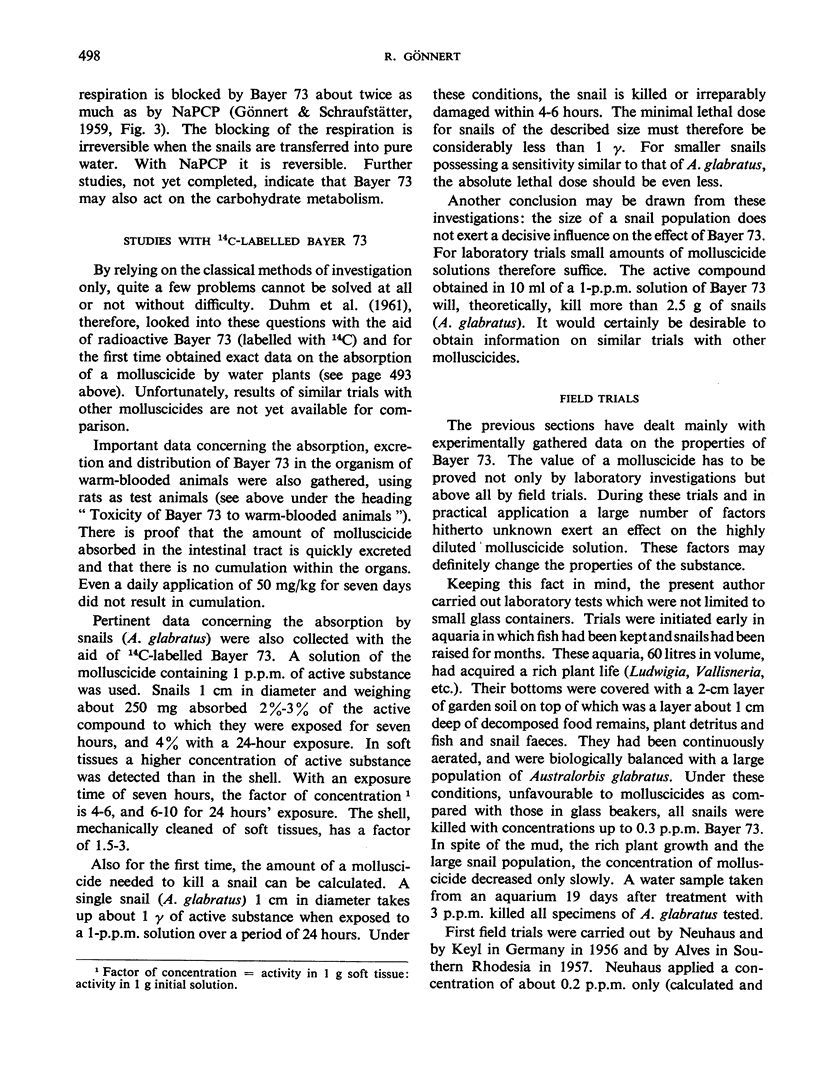
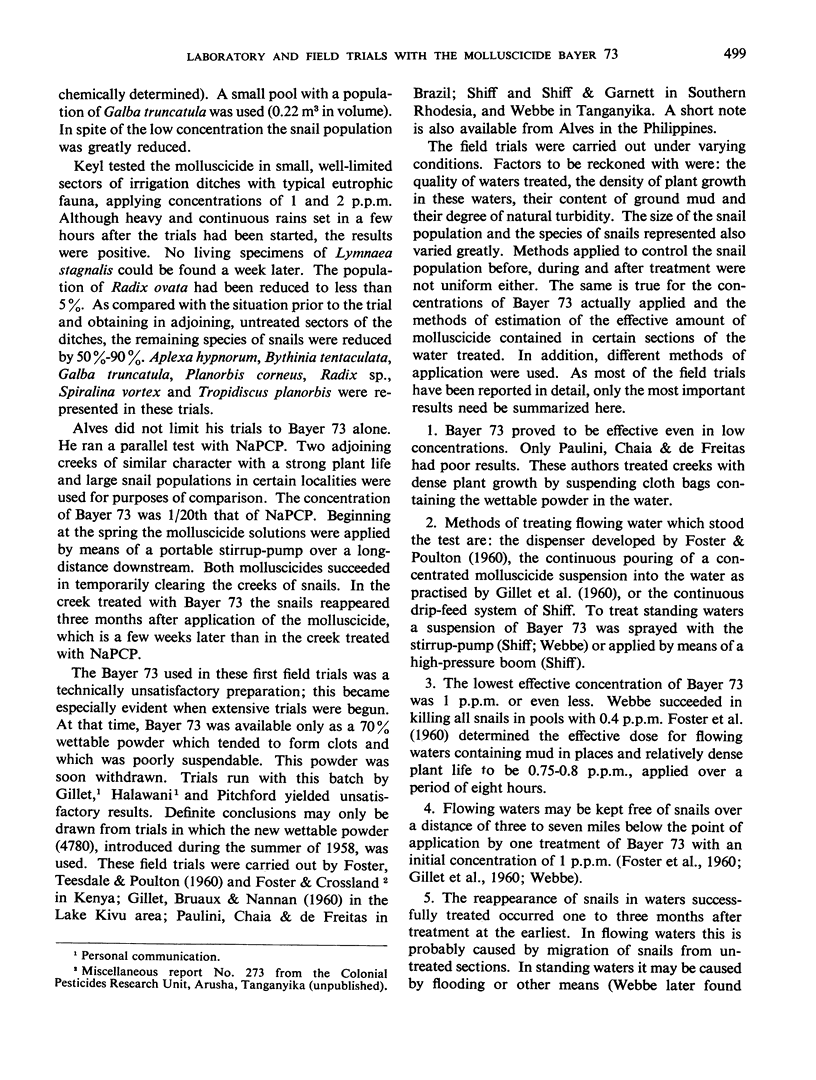
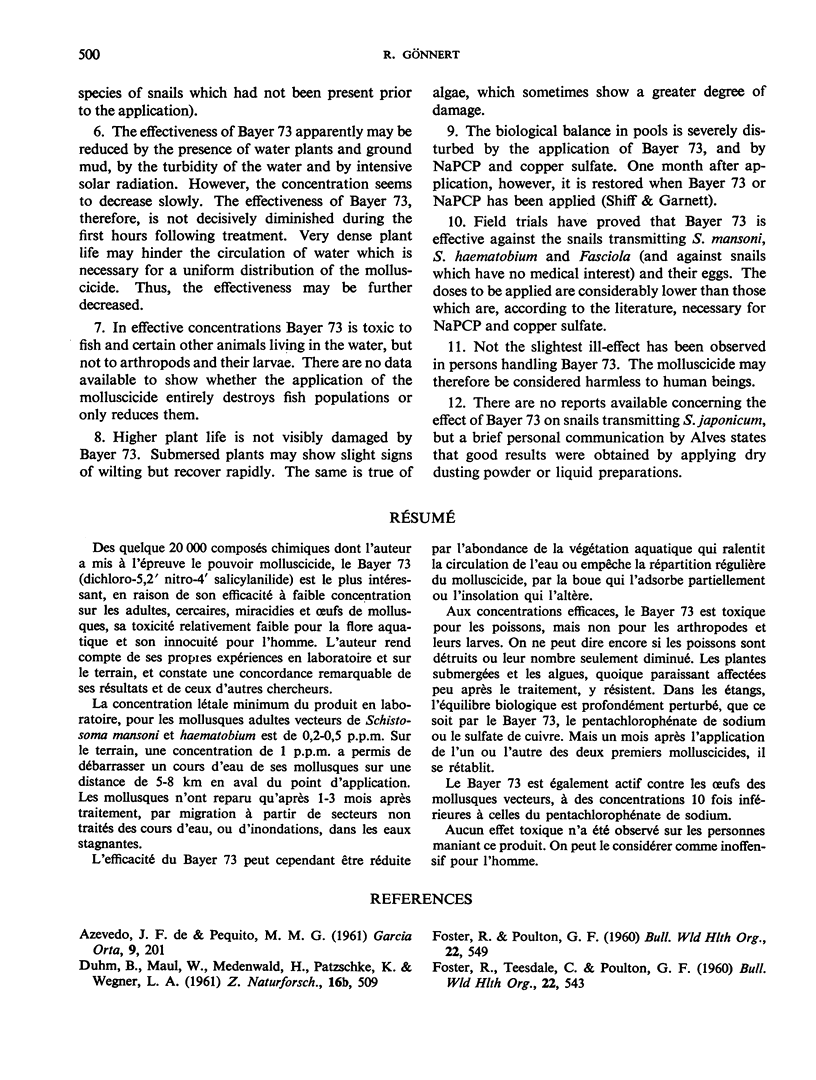
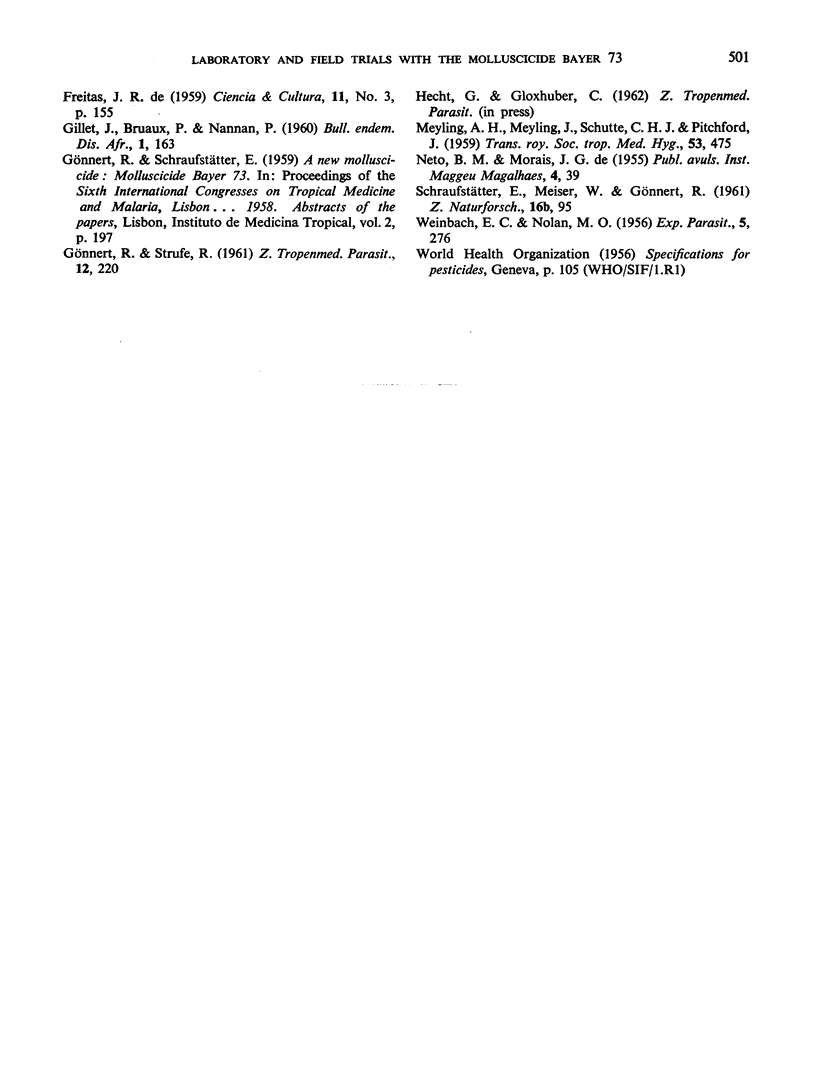
Selected References
These references are in PubMed. This may not be the complete list of references from this article.
- FOSTER R., POULTON G. F. An apparatus for the prolonged and accurate dispensing of suspensions and solutions. Bull World Health Organ. 1960;22:549–554. [PMC free article] [PubMed] [Google Scholar]
- WEINBACH E. C., NOLAN M. O. The effect of pentachlorophenol on the metabolism of the snail Australorbis glabratus. Exp Parasitol. 1956 May;5(3):276–284. doi: 10.1016/0014-4894(56)90040-6. [DOI] [PubMed] [Google Scholar]


